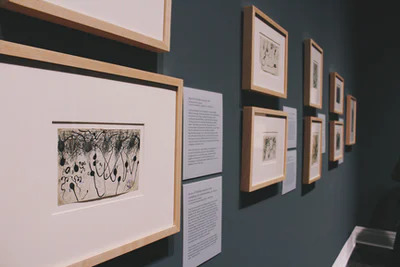创新背景
中风幸存者最明显的迹象通常是说话或走路有困难。但另一个挑战可能会对人们的日常生活造成更大的影响:中风幸存者通常会失去感觉和一只手臂和一只手的肌肉控制,这使得他们难以穿衣吃饭,也难以处理牙刷或门把手等日常物品。
创新过程
斯坦福大学和佐治亚理工学院的医生和工程师正在研究一种新颖的疗法,可以帮助更多中风幸存者重新获得控制手臂和手的能力——一种振动手套,每天可以轻轻地刺激佩戴者的手几个小时。

乔治亚理工学院(Georgia Tech)的研究生凯特琳·西姆(Caitlyn Seim)启动了这个项目,希望手套的刺激能产生一些与传统锻炼项目相同的效果。在开发出一个原型之后,她找到了斯坦福大学的同事,神经学副教授Maarten Lansberg和机械工程教授Allison Okamura,希望扩大她的研究范围。在吴仔神经科学研究所神经科学:翻译基金的帮助下,三人正在努力改进他们的原型手套,使该设备更接近临床测试。
兰斯伯格多年来一直在治疗中风患者,并帮助领导了斯坦福中风协作行动网络(Stanford stroke Collaborative Action Network,简称SCAN),这是吴蔡神经科学研究所的另一个项目。与此同时,冈村的研究主要集中在触觉或基于触摸的设备上,在过去几年里,她的实验室花了越来越多的时间思考如何使用这些设备来帮助中风幸存者。
对西姆来说,她对中风的兴趣源于对可穿戴计算设备的兴趣——但她并没有制造更多的虚拟现实眼镜和智能手表,她说她希望将可穿戴计算应用到健康和无障碍领域。

怀着这样的雄心壮志,西姆制造了一个振动手套的原型,她希望它能刺激神经,改善中风幸存者的手和手臂的感觉和功能。在收集了一些有希望的初始数据后,西姆联系了斯坦福大学的研究团队。
Seim, Lansberg和Okamura还在修改手套的设计,以改善它的功能,增加舒适和易用性的元素。然后,他们将在斯坦福大学开始新一轮的临床试验。
创新价值
未来振动手套可能会被应用于治疗与中风相关的其他并发症,帮助中风幸存者恢复他们的手和胳膊因中风所失去的一些功能。
创新关键点
这种新颖的疗法,可以帮助更多中风幸存者重新获得控制手臂和手的能力——一种振动手套,每天可以轻轻地刺激佩戴者的手几个小时。
Developing vibrating gloves to treat stroke symptoms
Doctors and engineers at Stanford University and Georgia Tech are working on a novel treatment that could help more stroke survivors regain the ability to control their arms and hands - a vibrating glove that gently stimulates the wearer's hand for several hours a day.
Caitlyn Seim, a graduate student at Georgia Tech, started the project with the hope that the glove stimulation would produce some of the same effects as a traditional exercise program. After developing a prototype, she approached Stanford colleagues, Maarten Lansberg, an associate professor of neurology, and Allison Okamura, a professor of mechanical engineering, about expanding the scope of her research. With the help of the Wu Tsai Institute of Neuroscience Neuroscience: Translation Fund, the trio are working to improve their prototype glove and bring the device closer to clinical testing.
Lansberg has been treating stroke patients for years and helps lead the Stanford Stroke Collaborative Action Network, or SCAN, another program of the Wu CAI Neuroscience Institute. Okamura's research, meanwhile, has focused on haptic or touch-based devices, and over the past few years her lab has spent more and more time thinking about how to use them to help stroke survivors.
For Sim, her interest in stroke stems from an interest in wearable computing - but instead of making more virtual reality glasses and smartwatches, she says she hopes to apply wearable computing to health and accessibility.
With that ambition in mind, Sim has built a prototype vibrating glove that she hopes will stimulate nerves and improve the feeling and function of the hands and arms of stroke survivors. After collecting some promising initial data, Sim contacted the Stanford team.
Seim, Lansberg and Okamura are also modifying the glove's design to improve its functionality and add elements of comfort and ease of use. They will then begin a new round of clinical trials at Stanford University.
Value innovation
In the future, vibratory gloves may be used to treat other stroke-related complications, helping stroke survivors regain some of the function they lost in their hands and arms.
智能推荐
神经科学创新 | 新型微创BMI利用”fUS”技术可准确绘制大脑活动
2022-10-14加州理工学院的一项合作开发了一种新型的微创BMI,用于读出与运动计划相对应的大脑活动。使用功能性超声波(fUS)技术,它可以以100微米的分辨率(单个神经元的大小约为10微米)准确地绘制大脑深处的精确区域的大脑活动。
涉及学科涉及领域研究方向声音定位的神经网络模型反应人脑定位能力与环境相适应
2022-08-09研究团队利用卷积神经网络开发了一个能够模拟人脑对声音的定位的神经网络模型。经过实验证明,该模型不仅能像人类一样完成声音定位工作,还与人类具有十分相似的行为模式。同时,实验结果还支持了人类大脑的定位能力与人类进化的环境相适应的观点。
涉及学科涉及领域研究方向帕金森病的创新基因治疗试验
2022-08-22伦敦大学学院和伦敦大学学院医院(UCLH)的研究人员发起了一项新的基因治疗试验,称为AXO-Lenti-PD,旨在改善帕金森病患者大脑中多巴胺的供应。
涉及学科涉及领域研究方向神经科学创新 | 利用光成像电活动帮助研究星形胶质细胞
2022-06-29利用光成像电活动帮助观察研究星形胶质细胞活动和钾活动。
涉及学科涉及领域研究方向